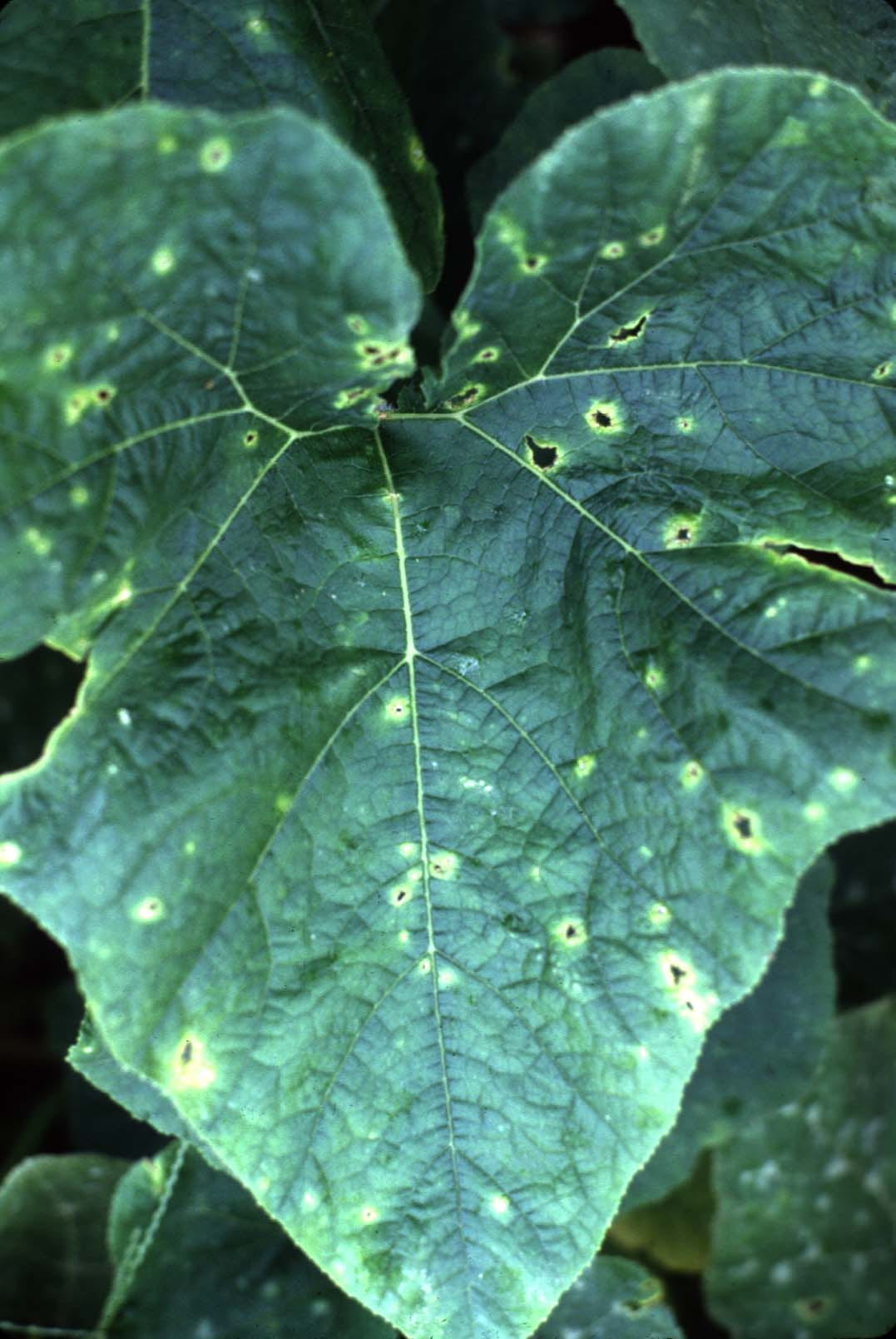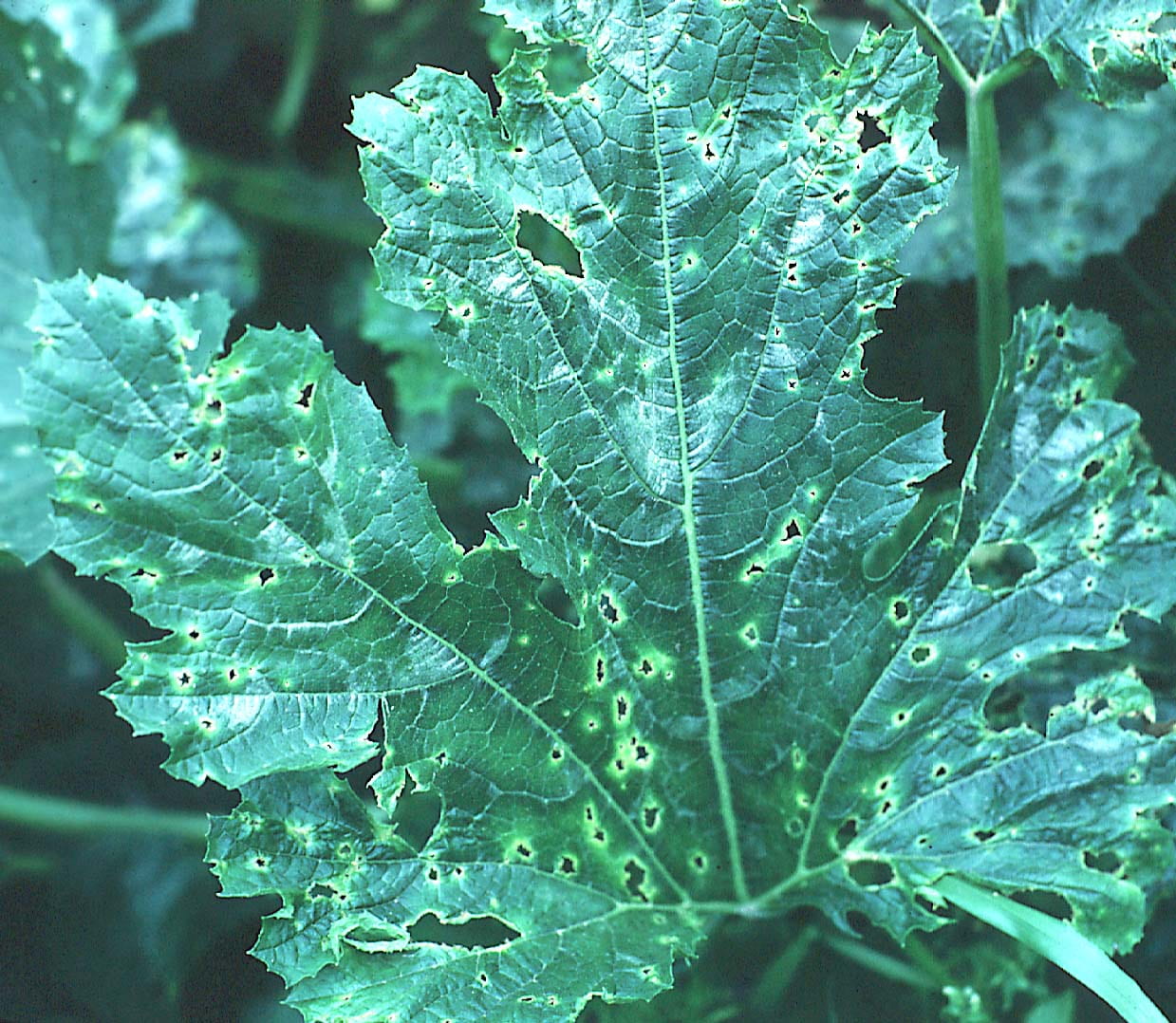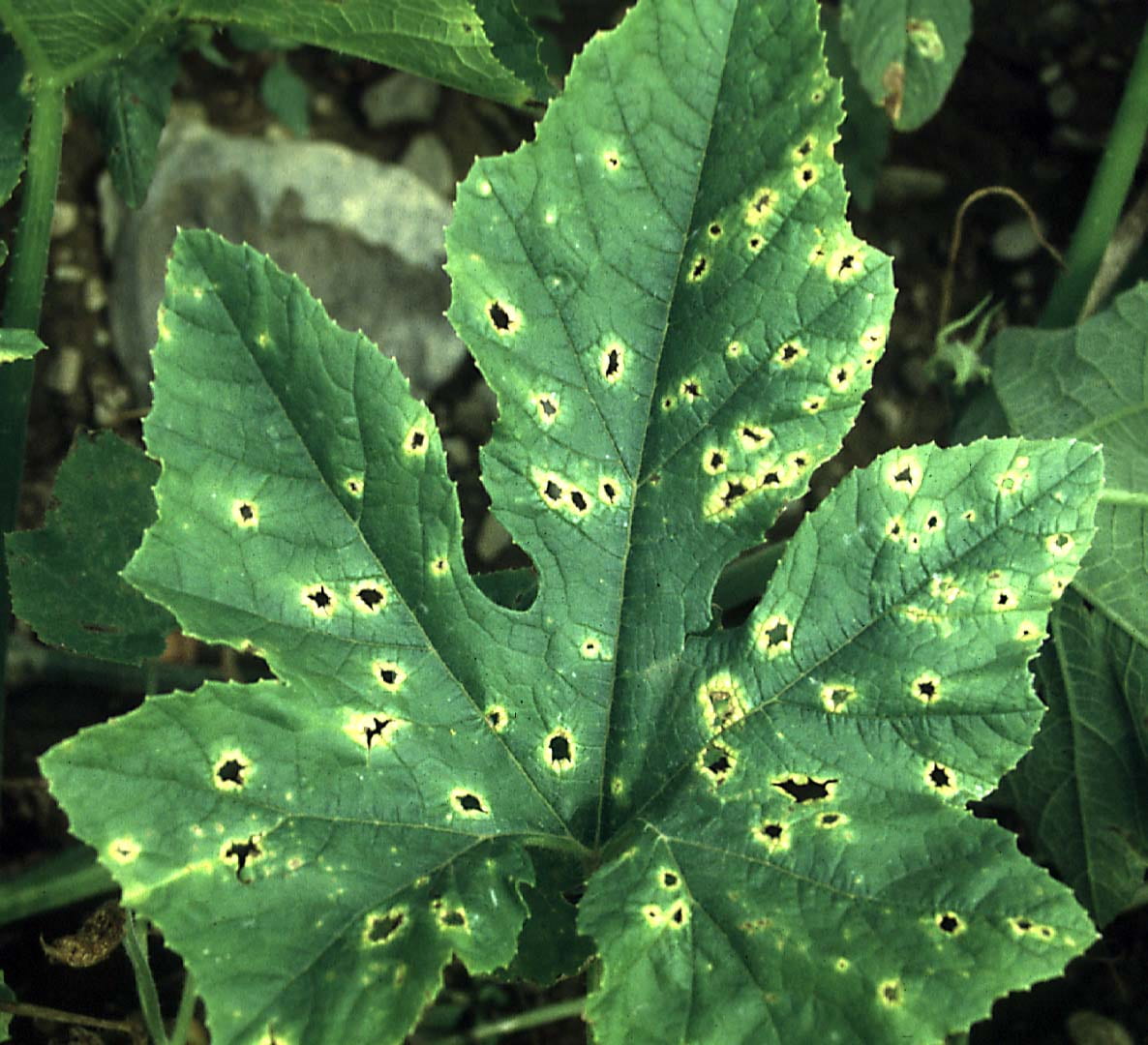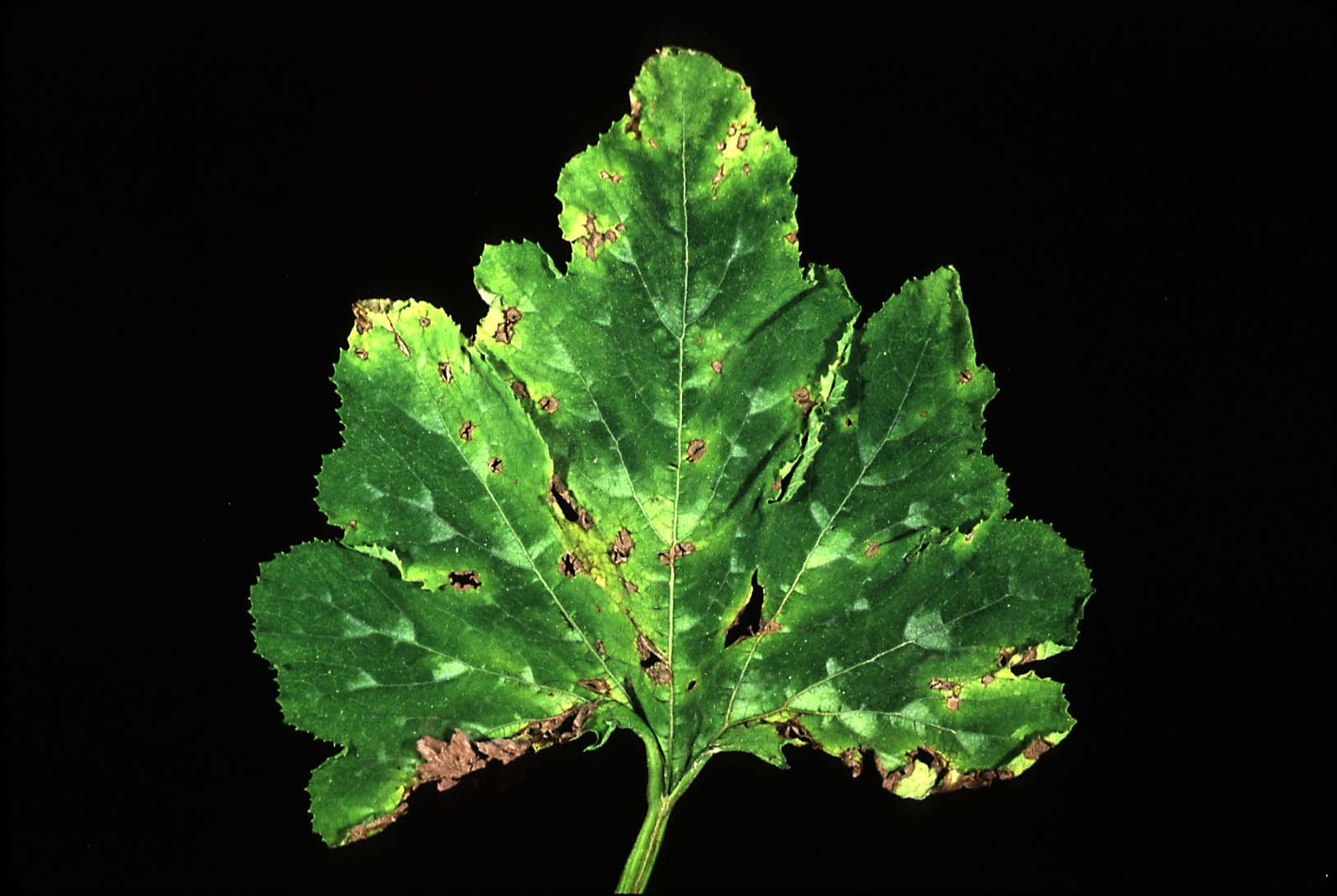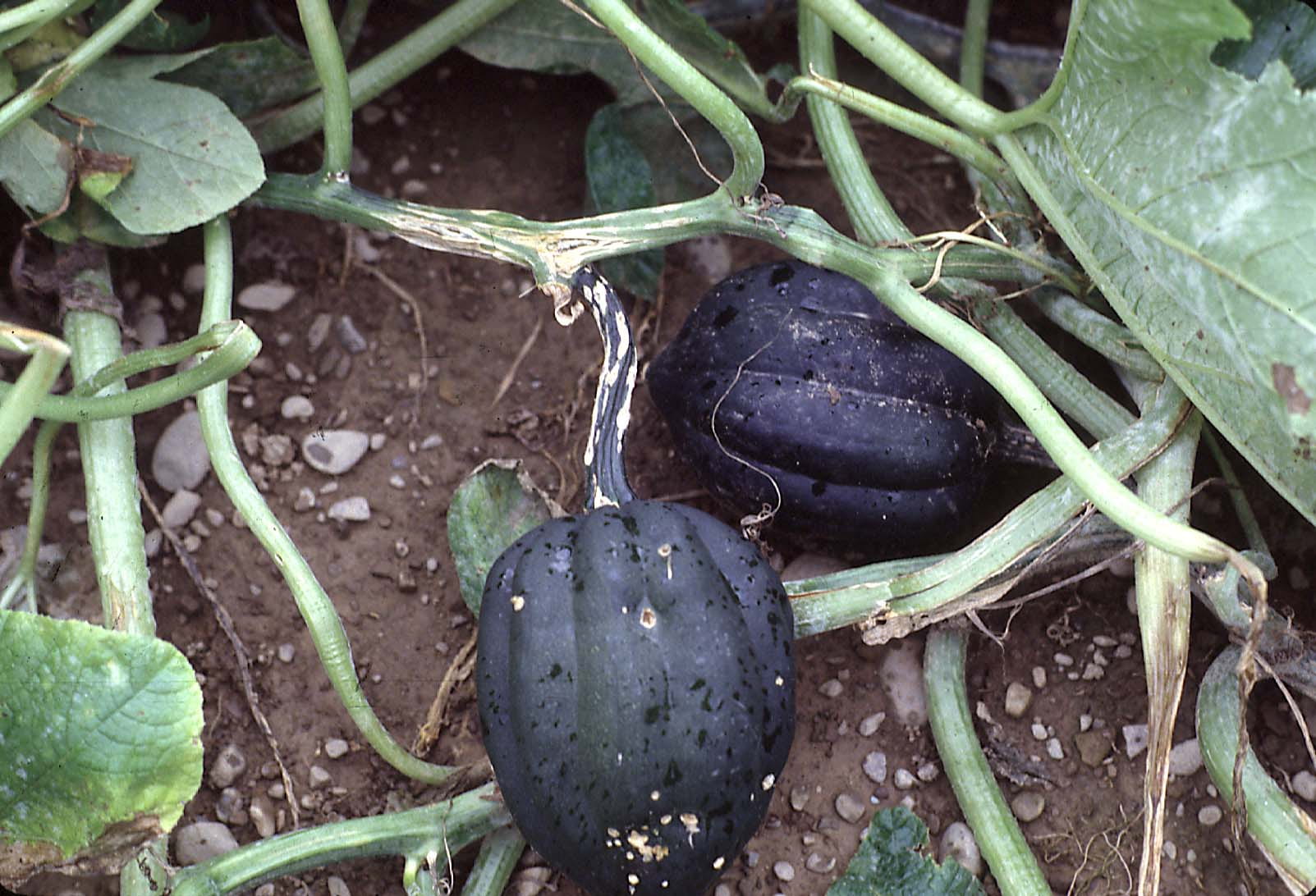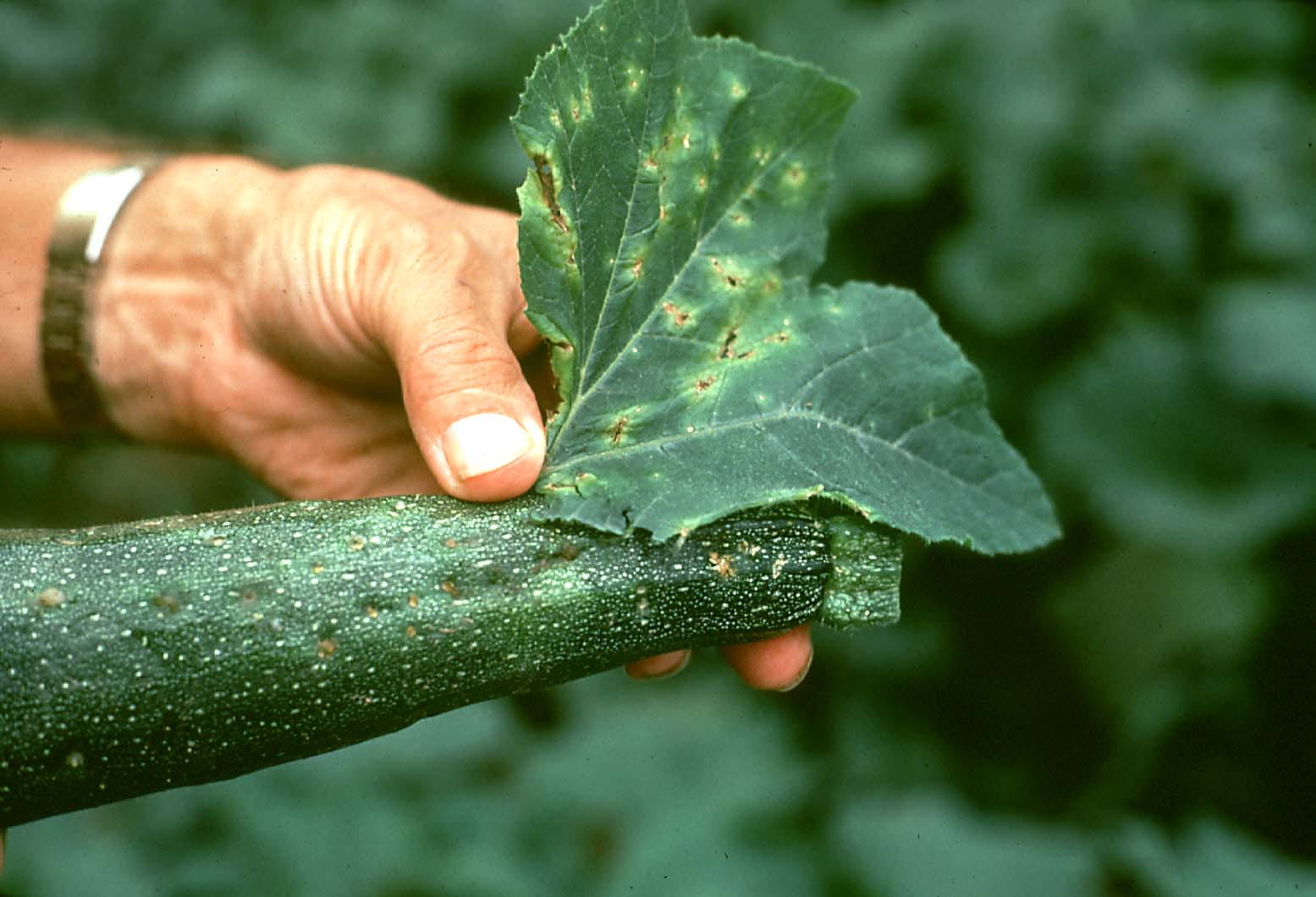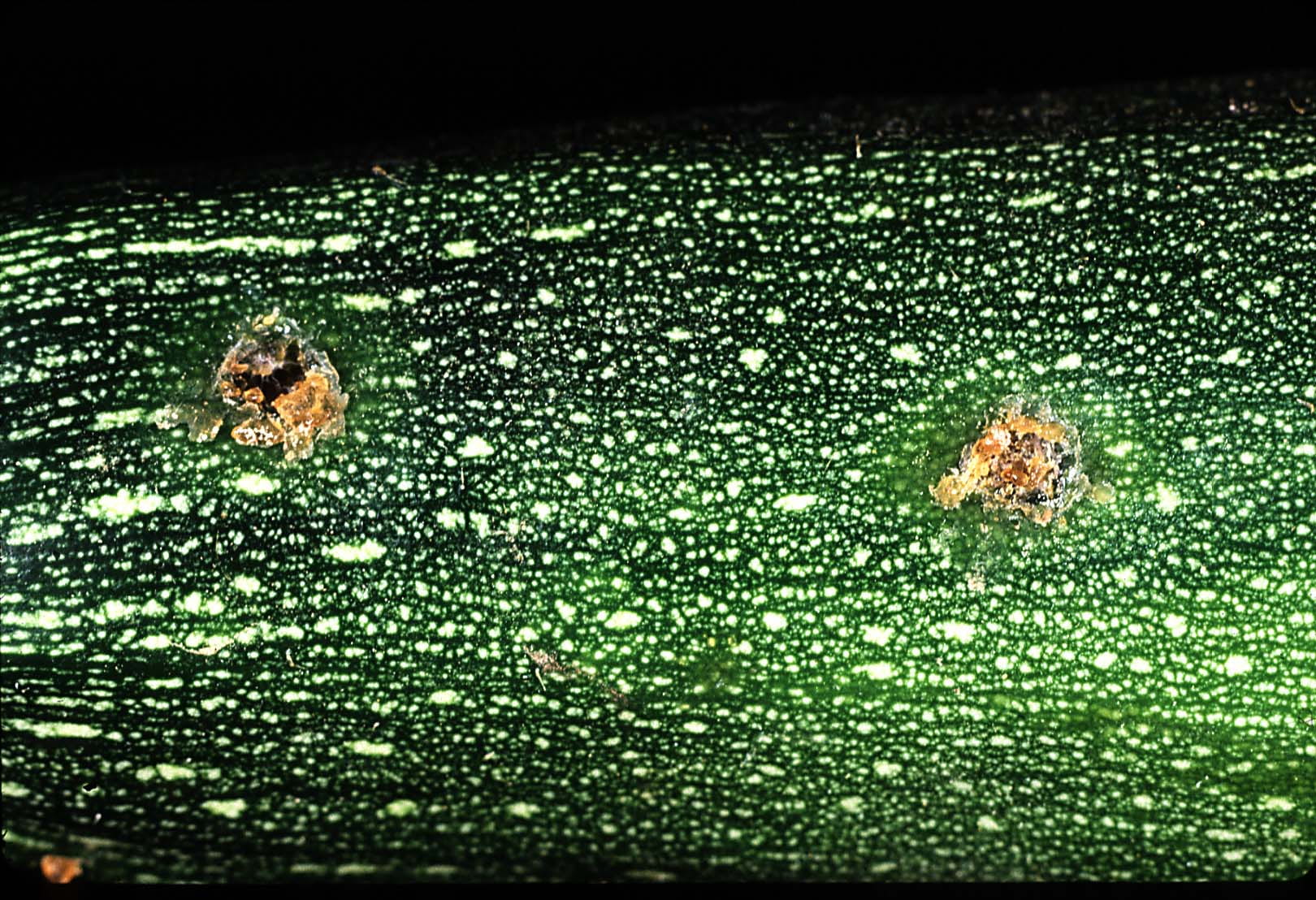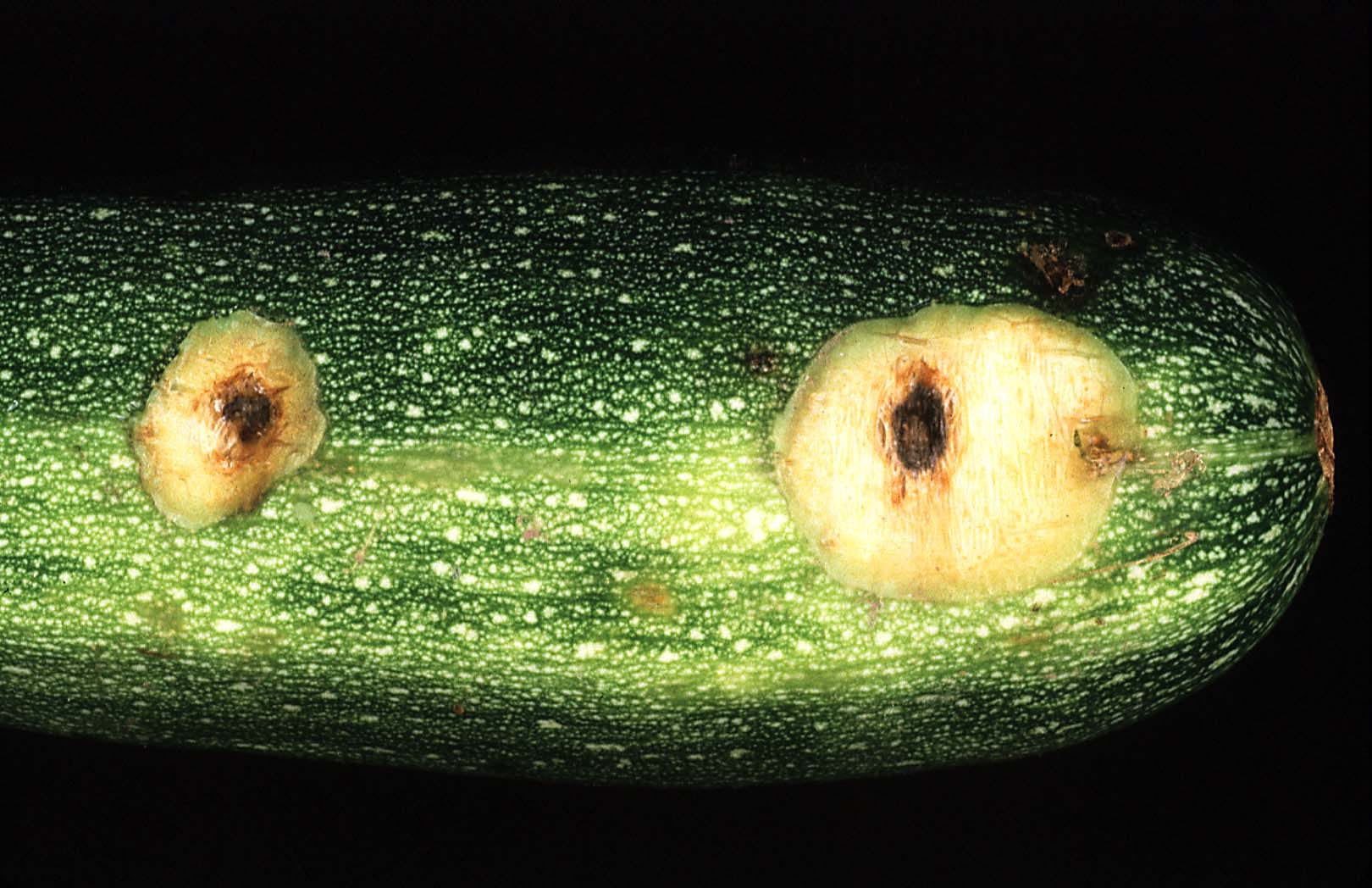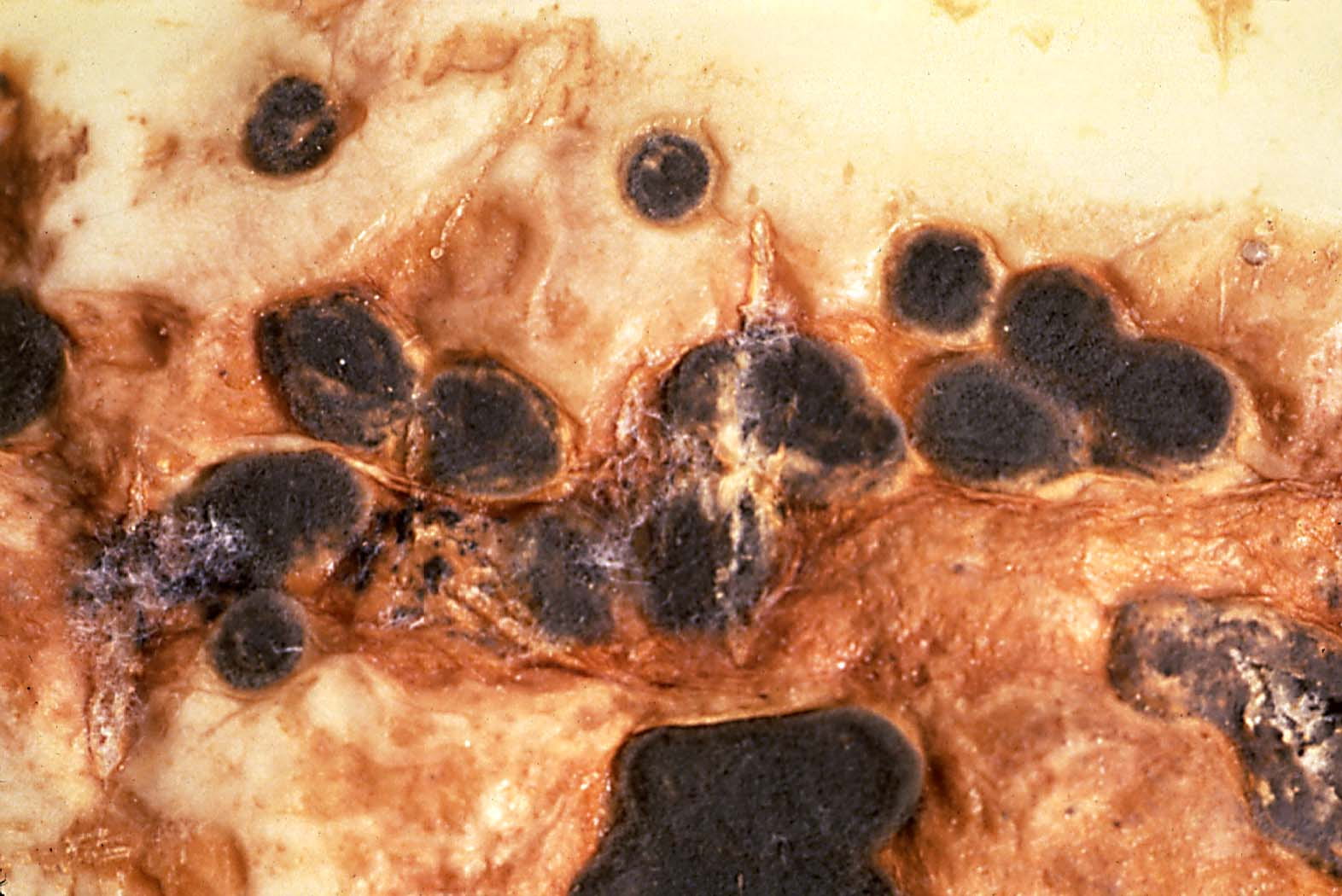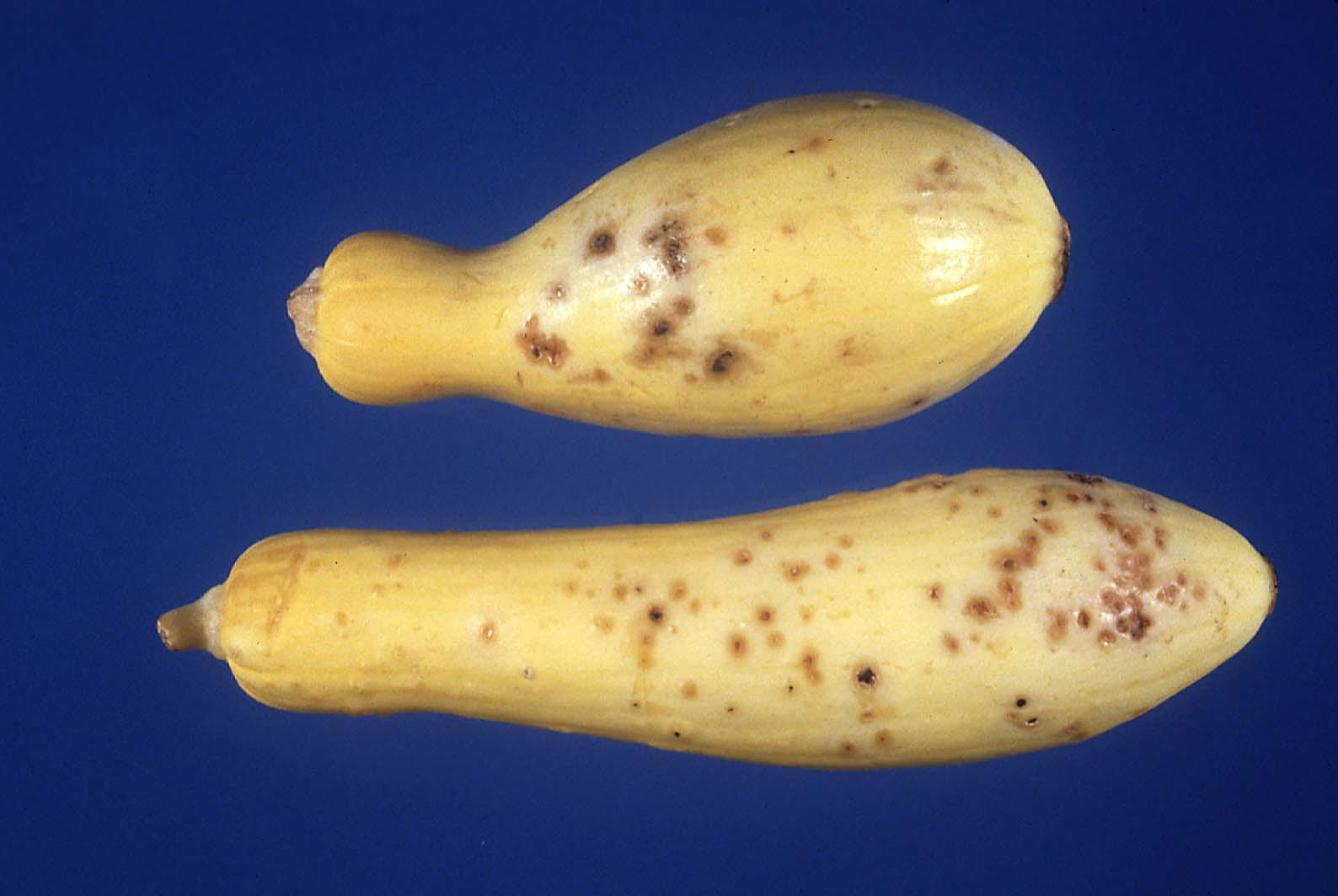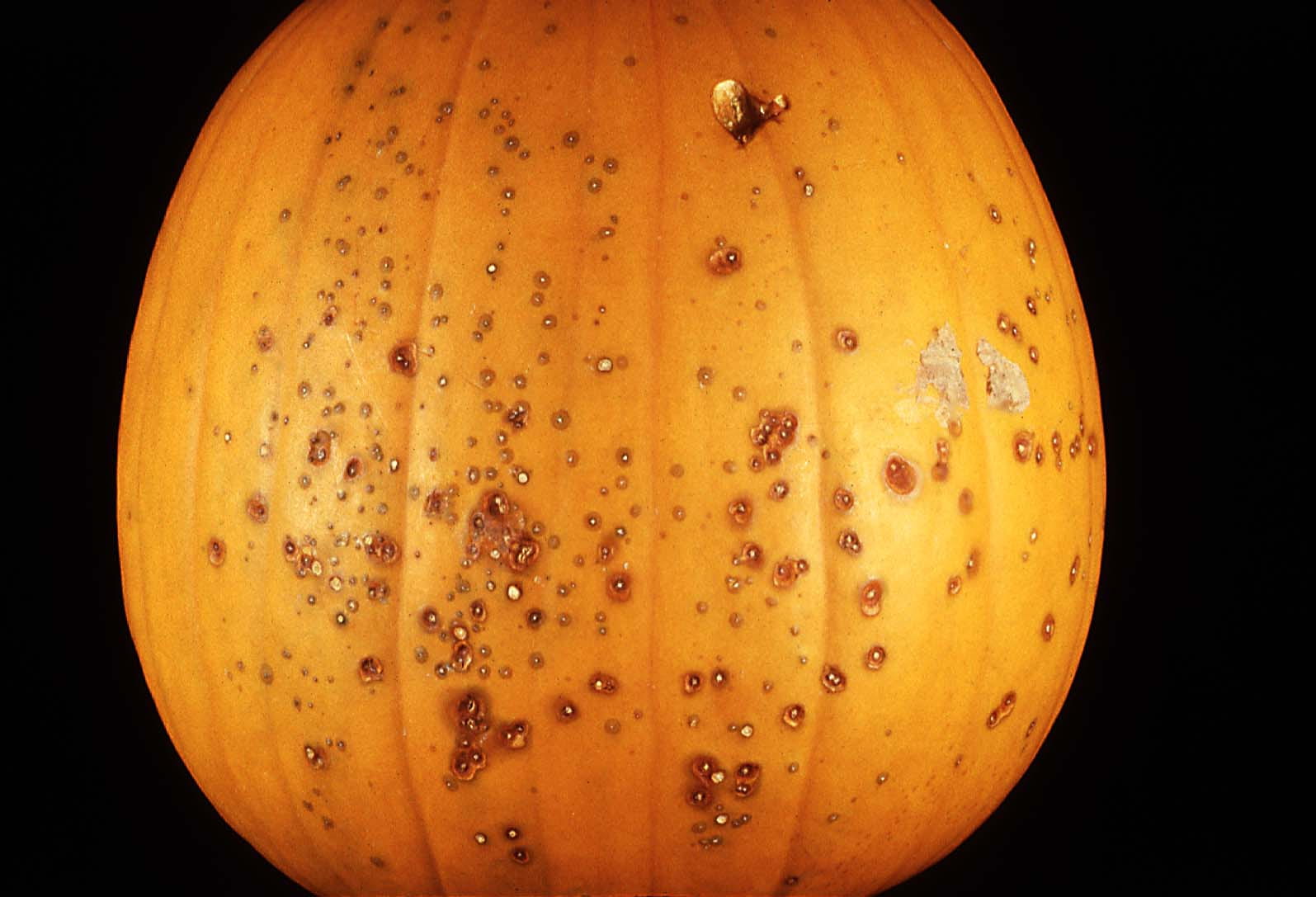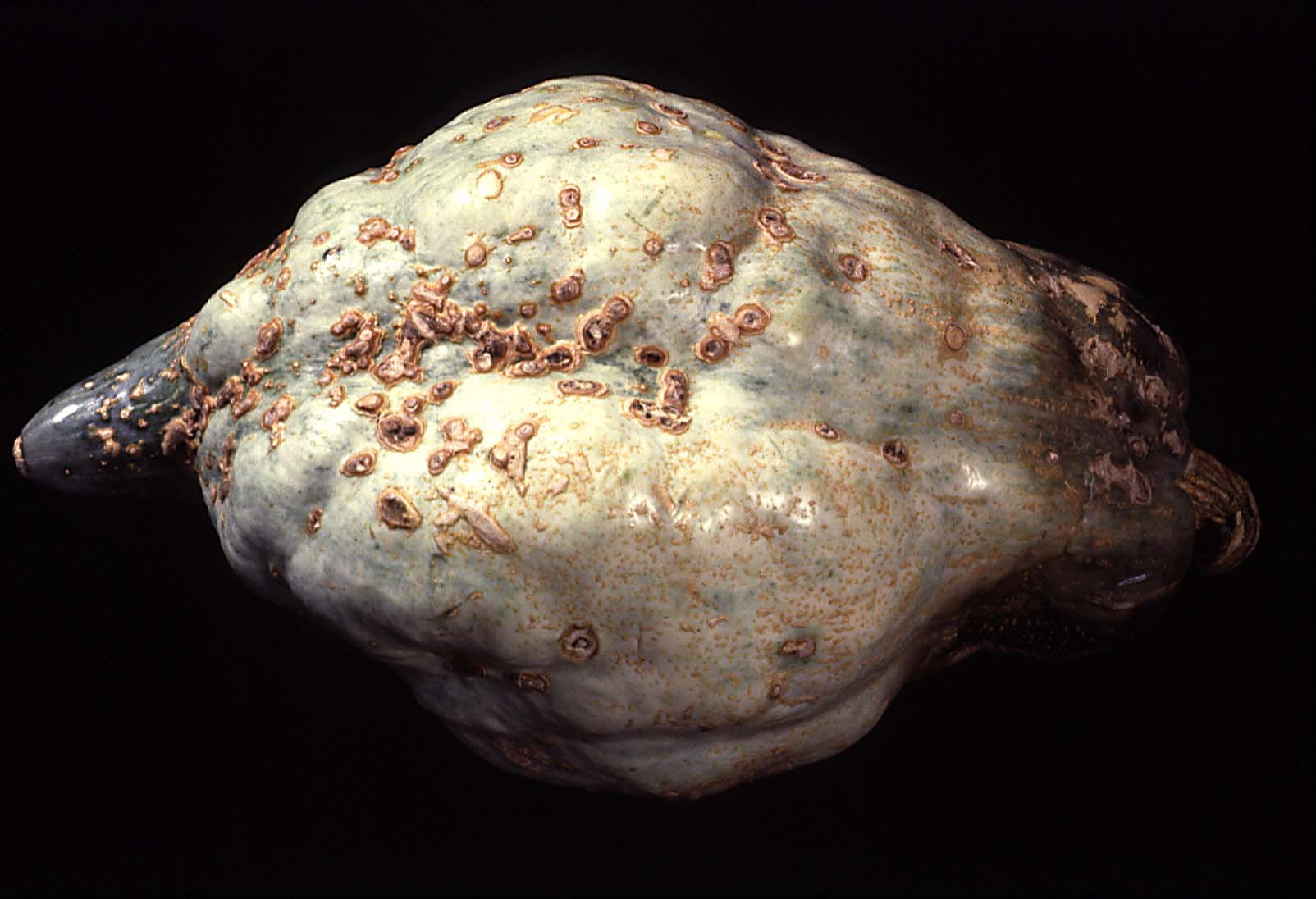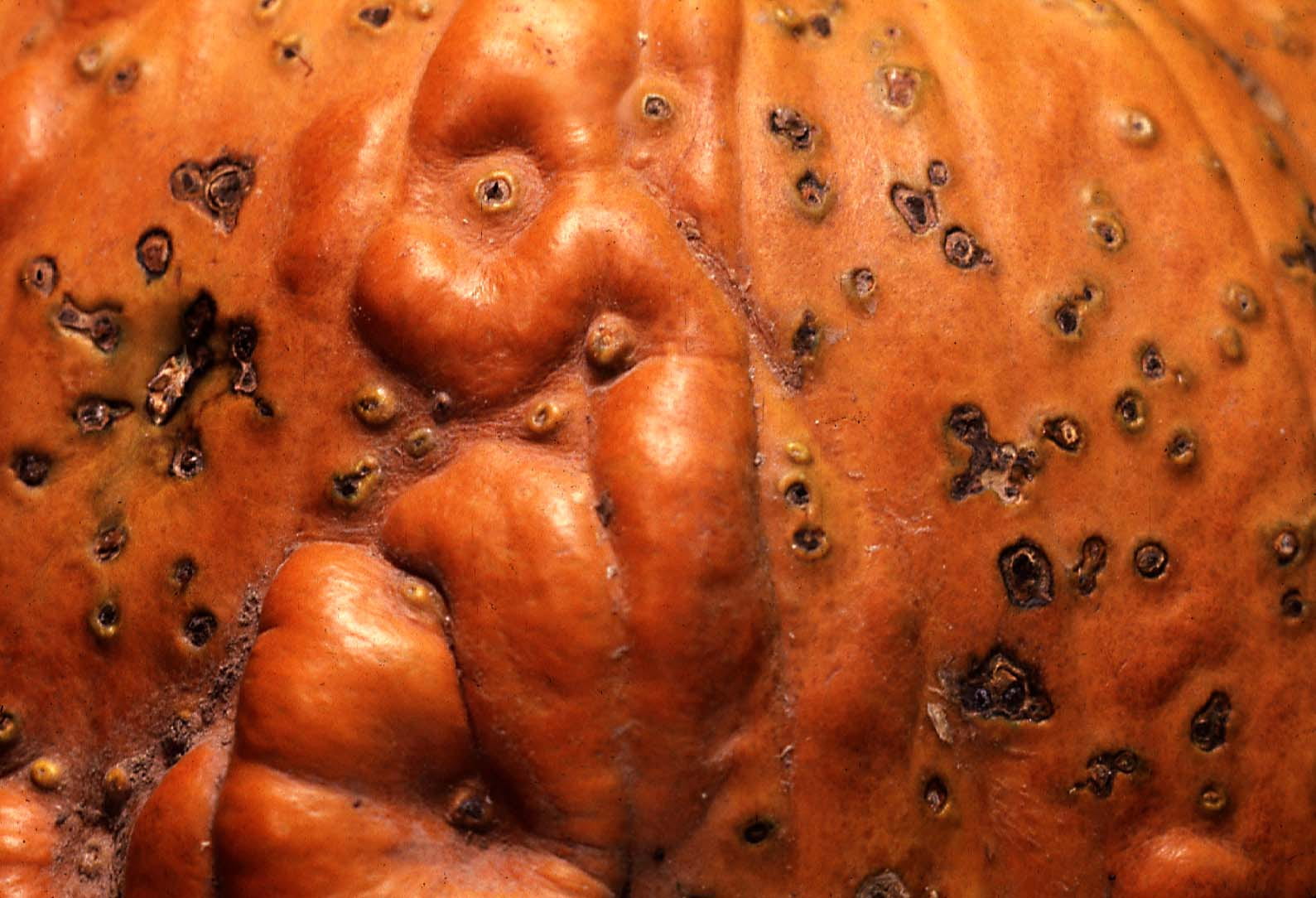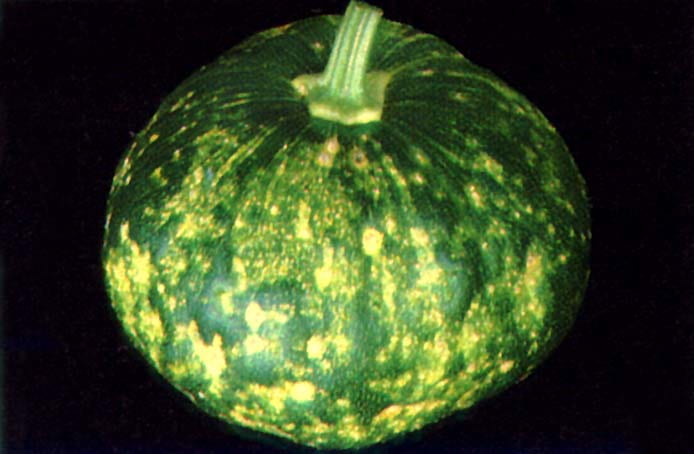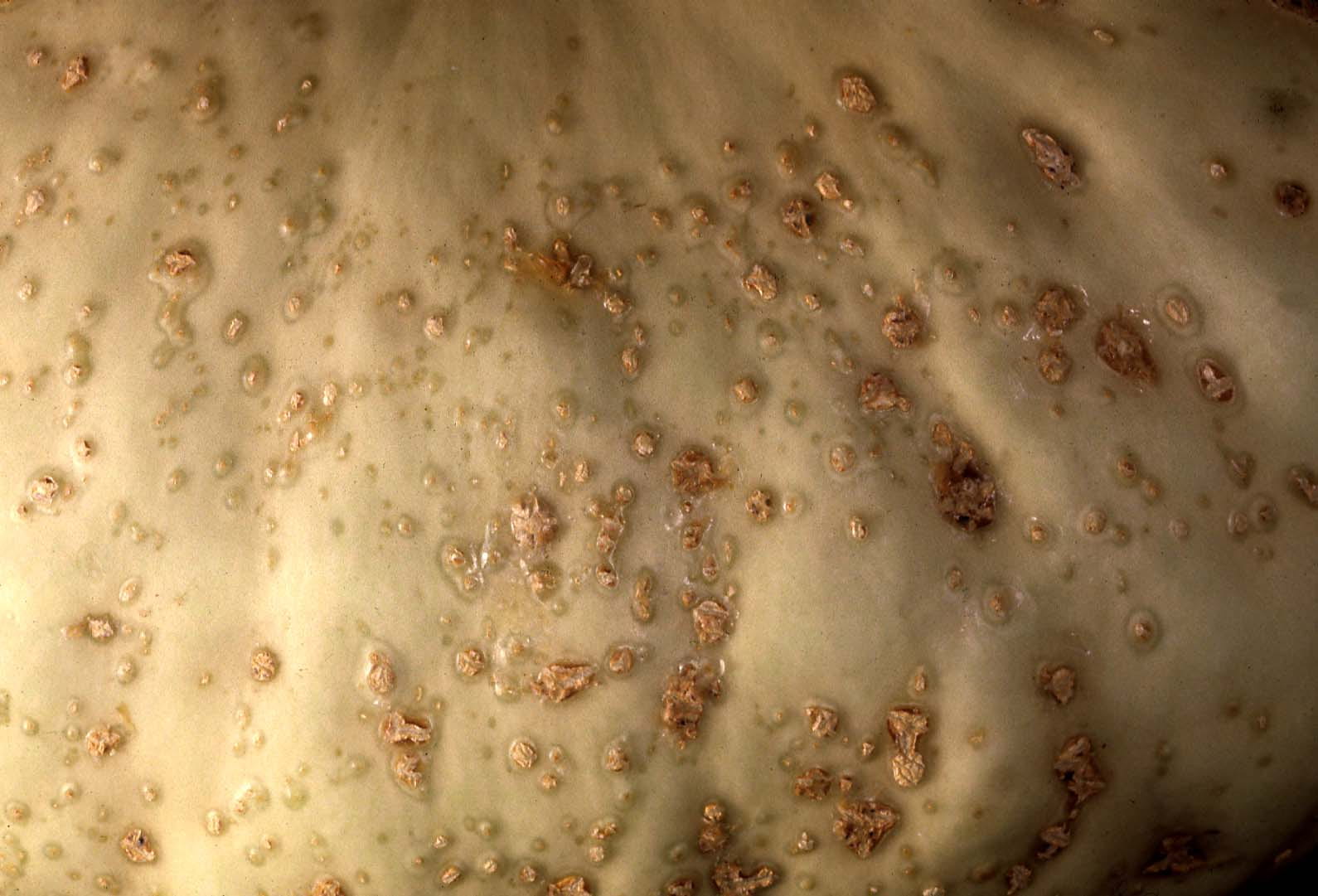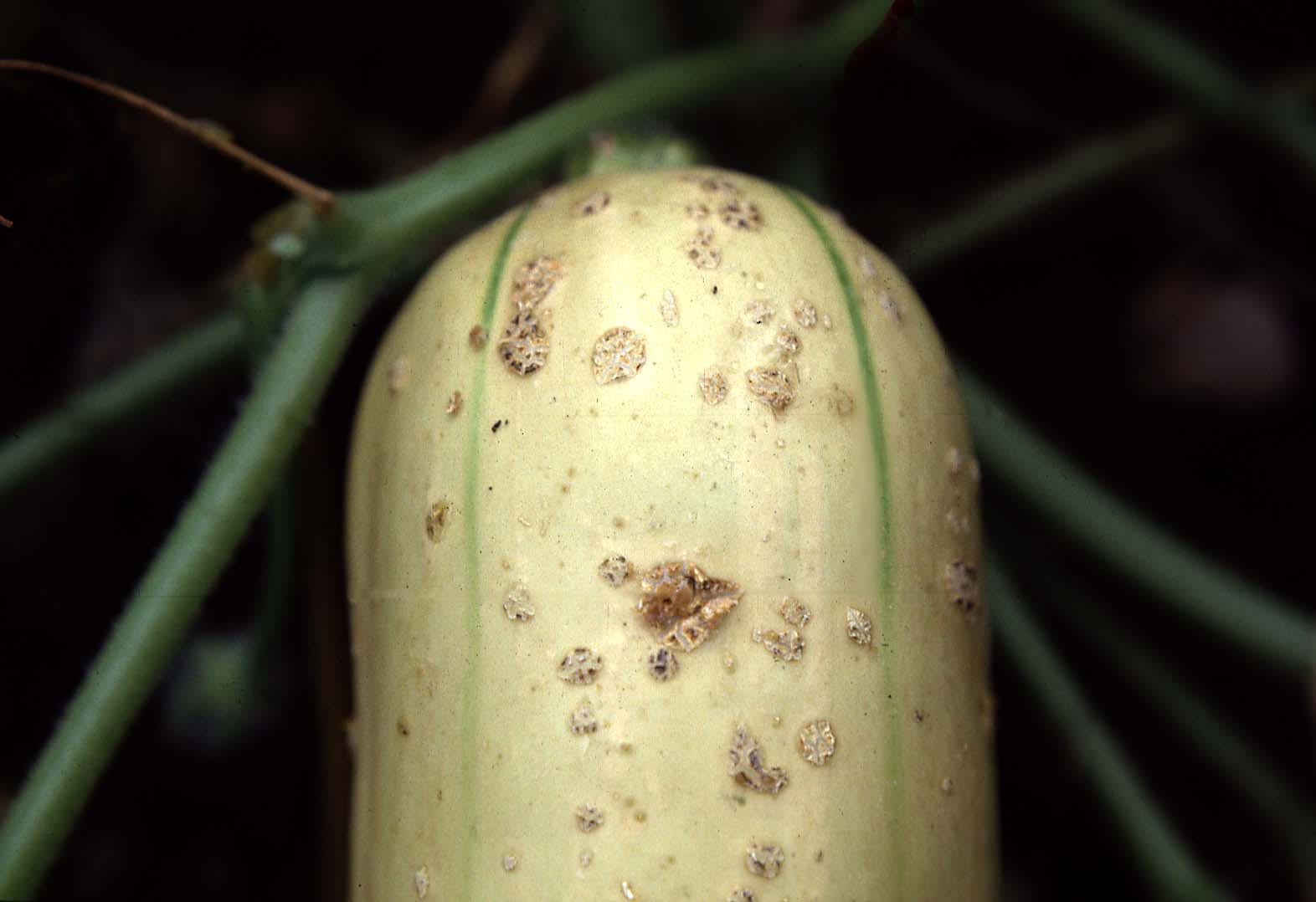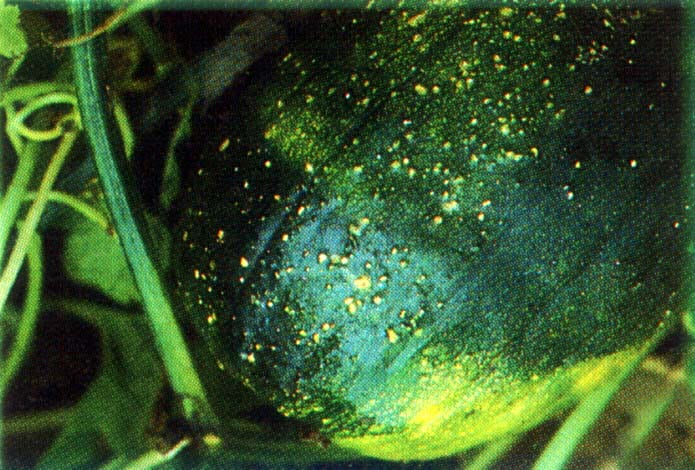Printer-friendly .pdf version of this page.
Scab has become an uncommon disease in New York, and elsewhere in the northeast. The last occurrence confirmed by Cornell Plant Disease Diagnostic Clinic staff was in 2010. Interestingly, scab was first described in the United States in New York in 1887. The disease has been reported occurring throughout North America and Europe. In the 1980s when the first version of this factsheet was prepared, scab was considered of significance for summer and winter squash, pumpkin, gourd, and cantaloupe. At that time, scab of slicing and pickling cucumbers had become rare because of the availability of many resistant varieties. In the first factsheet about scab, it was described as potentially occurring every year if moisture or rainfall is plentiful and if temperatures are below normal. Perhaps global climate change has contributed to decline in occurrence. Improvement in production of seed free of the pathogen and the fact cucurbits are the only known hosts may also have contributed to this decline.
Causal Agent
Scab is caused by the fungus Cladosporium cucumerinum.
Symptoms
This fungal disease can affect all aboveground parts of the plant, but is most damaging because of the unsightly scab lesions that develop on fruit, usually making them unmarketable. On leaves and runners, pale-green water-soaked areas are the first sign of the disease. These spots gradually turn gray to white and become angular shaped. A chlorotic halo may appear around leaf spots. If weather conditions are favorable, scab can deform young leaves, and the apical runners of young plants like melons can be killed. Sporulation on leaves tends to be sparse. On fruit, scab can produce the greatest damage, especially if they are infected when young. Spots (aka lesions) first appear as small sunken areas similar to insect stings, about 1/8 inch in diameter. A sticky substance may ooze from the infected area. The spots become darker with age and may create a cavity in summer squash fruit, which are very susceptible. The cavities may be lined with a dark olive green, velvety layer of spores. Secondary soft rotting bacteria may also invade the cavities and lead to foul-smelling decay. On highly resistant cucurbit fruits, spores are more difficult to detect, and spots may remain quite superficial. Even under severe disease pressure only superficial infection has been observed on fruit of watermelon, which is considered to be highly resistant. But fruit of some cucurbits, including pumpkin, when infected early in development may develop more severe symptoms.
Images below: Symptoms of scab on leaves of butternut squash and pumpkin. Note the chlorotic halo around some leaf spots. The spots in the last image have heavy sporulation but are lacking the presence of the yellow halo. Petioles can also be infected.
Images below: Stems and fruit of acorn squash affected by scab.
Images below: Young zucchini squash leaf deformed by scab and lesions on fruit which become darker with age and may create a cavity lined with a dark olive green, velvety layer of spores.
Image below: Close up of the diagnostic dark olive green, velvety layer of spores produced by the scab pathogen on fruit.
Image below: Yellow summer squash fruit affected by scab.
Image below: Pumpkin fruit affected by scab.
Image below: Spaghetti squash fruit and leaf affected by scab.
Image below: Raised and sunken lesions of scab on surface of Blue Hubbard squash.
Image below: The relatively severe symptoms in this photograph of the pumpkin variety Howden may be due to infection occurring early in its development.
Images below: Numerous sites of fungal infection on the rind of both immature and mature fruit of susceptible cheese pumpkin, which is actually a squash (Cucurbita moschata).
Image below: Butternut squash fruit with the typical superficial spots of scab on a resistant cucurbit crop type.
Image below: Watermelon is considered to be highly resistant as illustrated by the superficial infection of fruit that occurs under severe disease pressure.
The only disease that scab is likely to be confused with is angular leaf spot, caused by the bacterium Pseudomonas lachrymans. Many of the symptoms described are nominally similar for leaf spot, including angular-shaped leaf spots, which become ragged holes with time, and small circular fruit spots, which, as the tissue dies, become white and crack open, allowing oozing to occur. Angular leaf spot can infect cucumber, squash, and pumpkins, whereas scab is now rare on cucumber. Lack of the olive green sporulation of scab serves to distinguish between angular leaf spot and scab. Additionally, angular leaf spot is more likely to affect foliage, whereas symptoms of scab occur on both foliage and fruit.
How the Pathogen Spreads
Spores (conidia) of the fungus are formed in long, branched chains and are borne on fairly long conidiophores, thus enabling spores to be dislodged easily. Spores can be blown long distances even in moist air. The pathogen may be seedborne. It overwinters mainly in squash and pumpkin vines. Spores are produced in the spring and are readily spread. They germinate and enter susceptible tissue within 9 hours. A spot may appear on leaves within 3 days with a new crop of spores present by the next day.
Favorable Conditions
The most favorable weather conditions for disease development are wet weather (valley fogs, heavy dews, and light rains) and temperatures near or below 70° F (21 ° C). At 63° F (17° C) growing tips of young plants are killed.
Host Range
Cucurbits are the only known hosts. See table for the relative susceptibility to scab of various culinary types of cucurbits.
| Culinary type | Species | Resistance/ susceptibility* |
| Slicing and pickling cucumbers | Cucumis sativus | Excellent resistant varieties controlled by a single dominant gene occur in both types. |
| Summer squash | Cucurbita pepo | Medium and dark green and yellow types are all susceptible. |
| Pumpkin | Cucurbita pepo
Cucurbita moschata Cucurbita maxima |
Examples such as Howden, Small Sugar, and Connecticut Field are all susceptible. Examples such as Cheese, Kentucky Field, Golden Cushaw are likely all susceptible. Examples such as Mammoth are susceptible. |
| Winter squash | Cucurbita pepo
Cucurbita moschata Cucurbita maxima |
Examples such as acorn types are moderately resistant. Examples such as the butternut types are moderately resistant. Examples such as Blue Hubbard, Boston Marrow, Buttercup, Delicious, French Turban, and Golden Delicious types are probably all moderately susceptible. |
| Gourd | Cucurbita pepo | Moderately susceptible. |
| Watermelon | Citrullus lanatus | Highly resistant. |
*Susceptible = foliar symptoms and deep penetration of fruit by lesions; moderately susceptible = some foliar symptoms and moderate penetration of fruit; moderately or highly resistant = few foliar symptoms and restricted lesion development on fruit; resistant = genetically conferred resistance without symptom development.
Management
- Use pathogen-free seed treated with a seed fungicide. Do not save your own seed if disease is present.
- Grow scab-resistant cucumber varieties.
- Select sites that have well-drained soils and are conducive to good air drainage to allow for rapid drying of foliage.
- Follow crop rotations of 2 or more years between cucurbit crops.
- Avoid using overhead irrigation, especially when leaves are wet from dew or are not expected to dry before night time.
- Scout crops routinely for symptoms. As the plants begin to run (vine types) or flower (bush types), chose five representative sites. At each site, inspect two older leaves on each of five plants. Record the number of infected plants. A total of 50 leaves should be inspected per field. After the row closes (vine types) or the plants that have fruit set begin to enlarge (bush types), substitute five plant areas. Examine ten leaves per area and five fruit at each location. Calculate and record the percent of plants infected. Threshold: symptoms found on one leaf per 25 to 50 leaves sampled.
More information/prepared by:
Originally prepared for Vegetable MD Online website by Thomas A. Zitter, Emeritus Professor, PPPMB, Cornell University. Photographs were taken by Tom Zitter or Kent Loeffler.
Edited and updated October 2022 by:
Margaret Tuttle McGrath
Associate Professor
Long Island Horticultural Research and Extension Center (LIHREC)
Plant Pathology and Plant-Microbe Biology Section
School of Integrative Plant Science
College of Agriculture and Life Sciences
Cornell University
mtm3@cornell.edu



